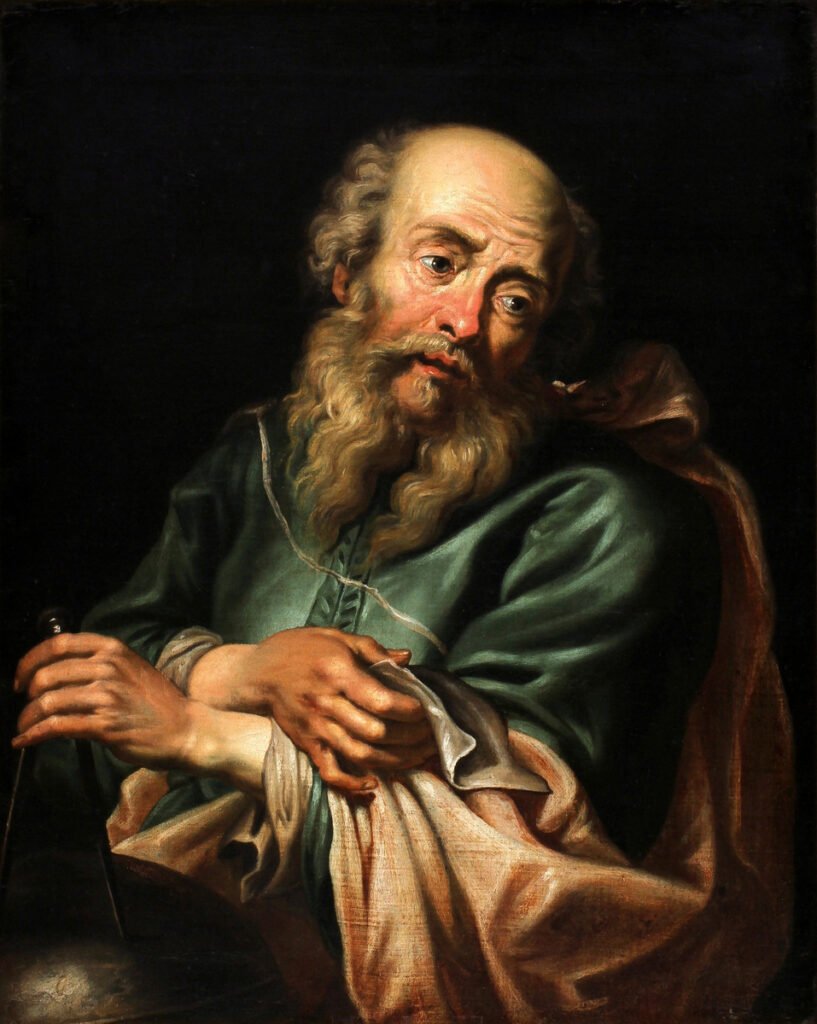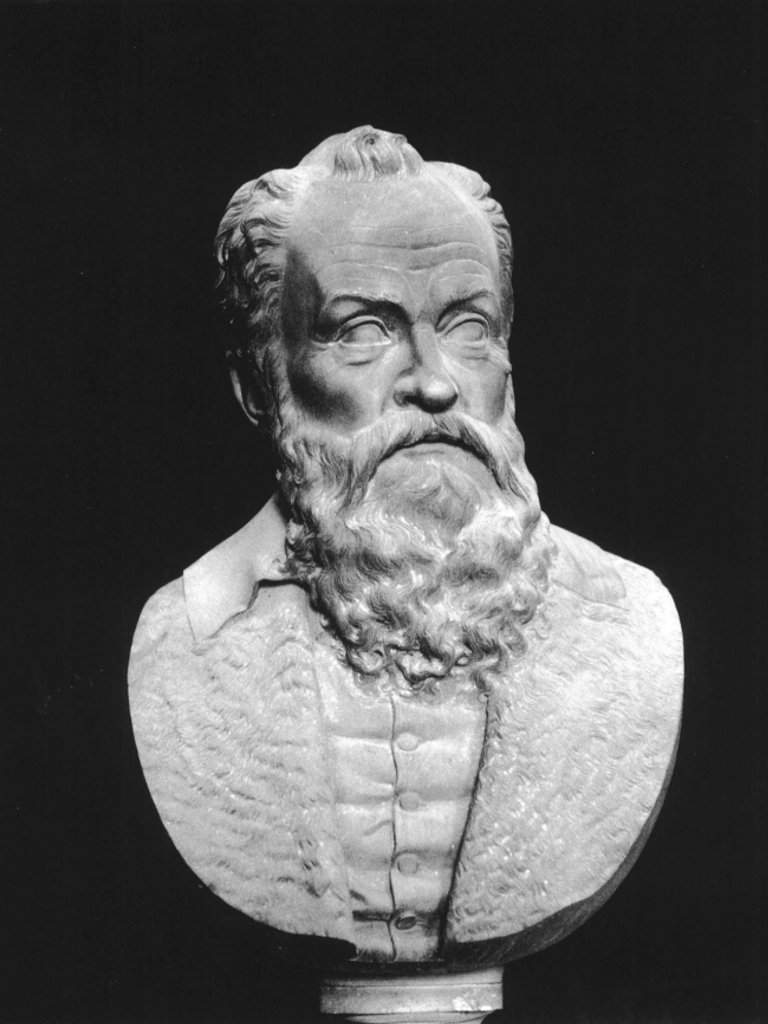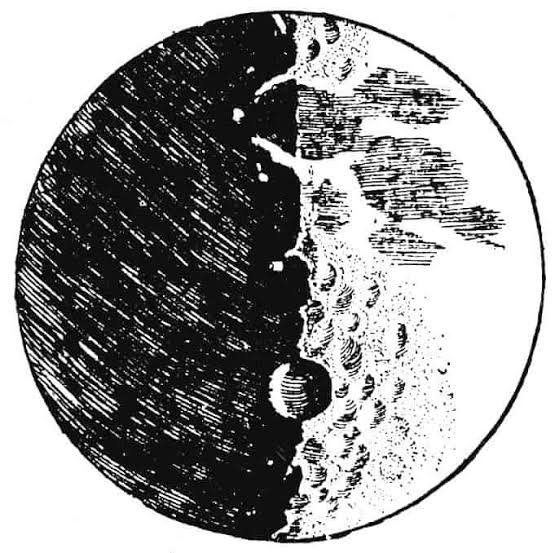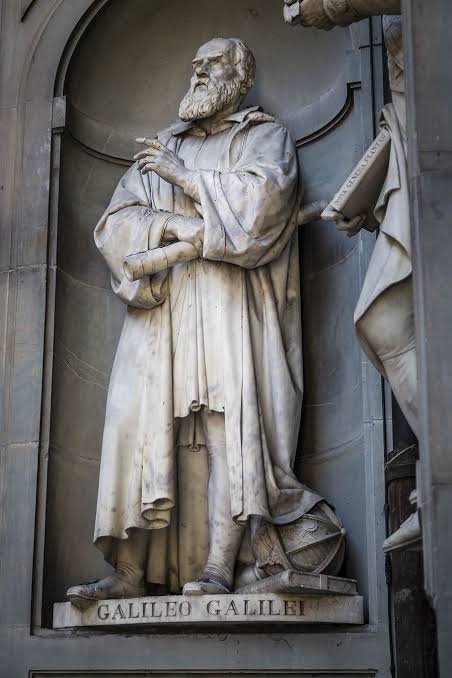Galileo Galilei was an Italian astronomer, physicist, and mathematician who lived from 1564 to 1642. He is considered by many to be the “The father of science.” His work was crucial in laying the groundwork for the scientific revolution that occurred in the 17th century, and he is credited with making a number of seminal contributions to the disciplines of physics, astronomy, and mathematics.

Galileo was born in Pisa, Italy, and attended the University of Pisa to get his education in mathematics and physics. He did his study on motion, mechanics, and astronomy while working as a mathematics professor at the University of Padua, where he was also responsible for teaching the subject.
Over his career, Galileo was responsible for a number of significant discoveries. He was the first person to make the discovery of Jupiter’s moons, which he referred to as the “Medicean stars” after his patron, the Grand Duke of Tuscany. In addition to this, he observed the phases of Venus, which offered proof for Copernicus’s heliocentric conception of the solar system.
The invention of the telescope, which he used to make observations of the night sky in an unparalleled level of detail, is often regarded as the scientist’s most significant contribution to the field. His discoveries gave support for the heliocentric model of the cosmos and presented a challenge to the Aristotelian understanding of the world.
Since He supported the heliocentric model of the universe, the Catholic Church considered his work to be heretical and accused him of being a heretic as a result. He spent the last nine years of his life under house imprisonment, and it wasn’t until the 20th century that the Church finally forgave him for his transgressions.
In spite of the opposition he encountered, Galileo’s work had a significant influence on the development of modern science, and he is now largely considered as one of the most accomplished scientists in the annals of human achievement.
Table of Contents
early life of Galileo ( Father of Science )
Galileo Galilei was born on February 15, 1564 in the city of Pisa, Italy. He was an Italian scientist. Vincenzo Galilei, his father, was a musician and music theorist, and his mother, Giulia Ammannati, was from a renowned Pisan family. Galileo was named after both of his parents. His family did not have a lot of money, but they were respected members of the town where they lived, and Galileo was the oldest of six children.
His father was an educator, and the young Galileo had a flair for both mathematics and music early in his life. He initially planned to attend the University of Pisa to pursue a career in medicine; however, he found that he was more interested in mathematics and physics. He dropped out of school without receiving a degree and went into the teaching profession to provide for himself.
In the year 1588, He was given a position as a mathematics professor at the University of Pisa. There, he was able to pursue his scientific interests in mechanics and motion. Yet, due to the fact that he had unorthodox beliefs on science and had a combative attitude, he was compelled to leave from the university in the year 1592. He left because of the dispute that he caused.
After that, He relocated to Padua, Italy, to take a position as a mathematics professor at the University of Padua, where he resided for the next 18 years. He continued his studies into mechanics and astronomy, and the results of his work made him renowned throughout Europe. During this time period, he was also responsible for the invention of the geometric and military compass, which was a game-changer in both navigation and combat.
Galileo’s early life was defined by his enthusiasm for the fields of mathematics and science, as well as his drive to pursue those fields despite encounters with hostility and obstruction. His early achievements established the groundwork for his subsequent scientific accomplishments, which helped win him a position among the most accomplished scientists in the annals of human history.
Galileo’s education and career
His early education was provided by his father, who was both a musician and a music theorist. Galileo Galilei was named after his father. His father acknowledged his son’s natural ability in mathematics and helped him build a strong foundation in the subject area for him. After that, He went to the University of Pisa to study medicine; nevertheless, he found that he was more interested in mathematics and physics during his time there.
He was educated at the University of Pisa, where he became familiar with the writings of ancient Greek philosophers such as Aristotle and Archimedes. He created his own ideas on the topic of buoyancy, which was something that greatly intrigued him in Archimedes’ work on the issue. But, because of his unconventional views on science and his combative disposition, he got into a fight with his coworkers, which resulted in his being expelled from the university without receiving his degree.

He did not let this loss deter him from pursuing his interests in mathematics and science. To make ends meet, he went into the teaching business and quickly established a name for himself as an exceptionally gifted and forward-thinking instructor. In addition, he started his own study on mechanics and motion, which paved the way for his subsequent work in astronomy by providing a platform on which to build.
Galileo was given a position as a mathematics professor at the University of Pisa in 1588, and it was there that he began his investigation into the physics and motion of the universe. Unfortunately, he once again got into a dispute with his other faculty members, and in 1592 he was had to quit from his position at the university.
After that, Galileo relocated to Padua, Italy, to take a position as a mathematics professor at the University of Padua, where he resided for the next 18 years. He maintained his studies into mechanics and astronomy throughout his life, during which he established a name for himself as one of the most accomplished scientists of his day.
His schooling was defined by his enthusiasm for mathematics and science as well as his tenacity to follow his interests in spite of criticism and difficulty. He was a pioneer in the field of astronomy. His creative approaches to education and his pathbreaking research created the groundwork for his subsequent contributions to science, and he continues to serve as an example to educators and researchers all across the globe.
works by Galileo galilei
Here are some of the most notable works by Galileo Galilei:
- The Little Balance (La Billancetta, 1586)
- On Motion (De Motu, 1590)
- The Operations of the Geometric and Military Compass (Le Operazioni del Compasso Geometrico et Militare, 1606)
- Sidereus Nuncius (Starry Messenger, 1610)
- The Assayer (Il Saggiatore, 1623)
- Dialogue Concerning the Two Chief World Systems (Dialogo sopra i due massimi sistemi del mondo, 1632)
- Discourses and Mathematical Demonstrations Relating to Two New Sciences (Discorsi e dimostrazioni matematiche, intorno a due nuove scienze, 1638)
In addition to these writings, Galileo penned a large number of letters and articles on a broad variety of subjects relating to mathematics, philosophy, and science. His studies had a significant impact and contributed to the establishment of the groundwork for the scientific revolution that occurred in the 17th century.
Galileo’s astronomy
Throughout his lifetime, Galileo Galilei was responsible for a number of significant advancements to the area of astronomy. The following is a list of some of his most important findings and contributions
Observation of the Moon
The first time that he looked at the moon via a telescope was an important step in the development of the scientific discipline of astronomy. When Galileo wanted to get a closer look at the moon, he utilised a telescope that had a magnification of around 30 times. It had been thought for generations that the moon was a perfect sphere with no craters or mountains on its surface. However, his observations demonstrated that the moon really had a cratered and mountainous surface.

Galileo’s studies of the moon enabled him to produce precise maps of its surface, which he published in his book “Sidereus Nuncius” (which translates to “Starry Messenger”) in the year 1610. These maps revealed previously unseen levels of information about the moon’s craters, mountain ranges, and other characteristics, which called into question the common perception of the moon as an ideal, smooth sphere.
The observations that Galileo made of the moon were also crucial in establishing the importance of the telescope as a tool for celestial observation. Until Galileo’s time, telescopes were largely employed for seeing earthly phenomena; however, his work demonstrated that telescopes could also be used to examine the night sky in great detail. This paved the way for new lines of enquiry in astronomy and contributed to the establishment of the principles upon which contemporary astronomy is based.
In the grand scheme of things, Galileo’s sighting of the moon was a pivotal event in the history of astronomy and served to contribute to a revolution in our knowledge of the cosmos.
Discovery of Jupiter’s Moons
The discovery of Jupiter’s moons by Galileo Galilei was one of the most important contributions that he made to the field of astronomy. As Galileo looked through his telescope at Jupiter in the year 1610, he saw what he at first mistook for three stars that were stationary in the area around the planet. But, after watching them for a few of nights, he came to the conclusion that these “stars” were really going around in orbit around Jupiter.
The discovery by Galileo of four enormous moons that are now collectively referred to as the Galilean moons offered support for the heliocentric model of the solar system that was suggested by Copernicus. These moons are Io, Europa, Ganymede, and Callisto. Yet, the finding of these moons circling Jupiter indicated that at least some objects in the solar system orbited other planets. At the time, the prevalent opinion was that all celestial things orbited the Earth, but the discovery of these moons orbiting Jupiter demonstrated that this view was incorrect.
The discovery of Jupiter’s moons also had significant repercussions for the discipline of astronomy as a whole. Galileo’s findings gave evidence against the Aristotelian view of the world, which maintained that all celestial objects were perfect spheres that did not change over time. [Galileo] was the first person to challenge this view. His findings, on the other hand, demonstrated that heavenly bodies were dynamic and susceptible to change over the course of time. This contributed to the laying of the groundwork for contemporary astronomy, which is founded on the scientific method and the use of observations and experiments to evaluate theories.
Ultimately, Galileo’s discovery of Jupiter’s moons was a key milestone in the history of astronomy and contributed to alter our view of the cosmos. This was due to Galileo’s contribution to the discovery of Jupiter’s moons.
Observation of Venus
Galileo Galilei observed the phases of Venus through his telescope, which provided evidence for the heliocentric model of the solar system proposed by Copernicus. However, Galileo was not able to observe any moons around Venus, as it does not have any natural satellites.
Galileo did observe the moons of Jupiter, which he discovered in 1610. He noticed that there were four small objects that appeared to be orbiting the planet. Over time, he observed their changing positions relative to Jupiter and concluded that they were moons that were in orbit around the planet. He named them the Medicean Stars, after his patron, the Grand Duke of Tuscany.
The discovery of the moons of Jupiter was a significant achievement for Galileo and had important implications for the study of astronomy. It provided evidence for the heliocentric model of the solar system, which proposed that the planets orbited the sun rather than the Earth. Galileo’s observations also demonstrated that the universe was much larger and more complex than previously thought, and helped to lay the foundation for the study of celestial mechanics.
Sunspots
Galileo Galilei was a pioneer in the field of astronomy, and he is credited with being one of the first people to see sunspots and the moons of Jupiter using a telescope. His observations of these occurrences had a tremendous influence on the study of astronomy as well as our comprehension of the cosmos.
Variations in the magnetic field of the sun are responsible for the formation of sunspots, which are dark regions on the surface of the star. Galileo was one of the first astronomers to detect these spots, which were previously assumed to be flaws on the surface of the sun. Galileo was one of the first astronomers to observe these spots. His studies of sunspots offered proof that the sun was not a perfect sphere that did not vary over time, but rather an entity that was dynamic and prone to change over time.
The discovery by Galileo of the moons around Jupiter was likewise a landmark achievement. Because of his studies, he was able to find four significant moons that circle Jupiter. These moons are now referred to as the Galilean moons. The heliocentric model of the solar system, which stated that the planets orbited the sun rather than the Earth, was supported by this finding, which offered proof for the hypothesis. The finding of these moons presented another challenge to the Aristotelian understanding of the world, which maintained that all heavenly bodies revolved around the Earth.
In the grand scheme of things, Galileo’s discoveries of sunspots and the moons of Jupiter contributed to a revolution in our knowledge of the cosmos and served to lay the groundwork for modern astronomy.
Telescope Design
Galileo Galilei was a competent instrument builder who contributed significantly to the development of the design of the telescope via his innovations. It was in the year 1609 that he constructed his first telescope, which had a magnification of around three times. After some time, he made several modifications to this design, resulting in telescopes that had wider apertures and superior optics.This post is sponsored by our partners Wigs
Galileo’s use of a convex lens as the objective lens in his telescopes is widely regarded as one of the most important advancements he brought to the field. Earlier telescopes, which used concave lenses, were unable to compete with this advancement due to its ability to provide a more expansive field of view and a more brilliant picture. In addition, Galileo played about with several lens configurations until landing on a design that consisted of a convex objective lens and a concave eyepiece lens. This configuration resulted in an image that was enlarged and oriented correctly.

Galileo made significant mechanical advancements to the telescope in addition to the optical advancements he pioneered throughout his career. He added a focusing mechanism, which enabled the operator to modify the distance that existed between the lenses so that the image could be brought into clear focus. In addition to it, he included a set of crosshairs or a reticle that assisted the operator in correctly aiming the telescope.
The telescopes that Galileo used were not only more powerful than those used by past astronomers, but they were also simpler to use. He created them with a shorter tube length, which allowed them to be carried about with less difficulty and made them more portable. He also sold them to rich clients and made them available to amateur astronomers so that they could use them in their work. This made them accessible to a much larger audience.
Ultimately, the contributions that Galileo made to the construction of telescopes served to revolutionise astronomy. His discoveries made it possible for more detailed observations to be made of the night sky, which in turn revealed new understandings about the nature of the universe.
marriage
While Galileo Galilei did not have a legal marriage, he did have a long-term relationship with Marina Gamba, with whom he had three children. Nonetheless, he did not marry in the conventional sense. But, since Galileo had made a vow of celibacy as a member of the Catholic Church, they were not considered to be married in the eyes of the law.
Marina Gamba was a Venetian peasant lady who held the position of housewife for Vincenzo Galilei, Galileo’s father. While Galileo was in his early twenties, he started a relationship with her that would last for a number of years after they first met. In the year 1600, they had their first child, a girl they called Virginia. They later welcomed Livia in 1601 and Vincenzo in 1606, bringing their total number of children to four.
Since Galileo was so cautious to conceal his connection with Marina Gamba throughout his lifetime, few people were aware that he was romantically involved with her. In point of fact, in order to conceal the nature of his connection with her and to avoid bringing attention to it, he often referred to her in official records as his “housekeeper” or “servant.”
During his life, Galileo’s devotion to Marina Gamba and their children never wavered, in spite of the unorthodox nature of his connection with her. He made sure that they were taken care of financially and was very active in their development, even going so far as to write them letters regularly when he was abroad on business.
death
Galileo Galilei passed away on January 8, 1642 at Arcetri, which is located close to Florence in Italy. He was 77 years old. He had been in terrible condition for a number of years, having suffered from a number of illnesses throughout the course of his life, including blindness in his senior years. It’s probable that he passed away from a combination of having a temperature and having heart failure.
The death of Galileo occurred at a time when both his body of work and his reputation were being evaluated critically. Even up to the time of his passing, the Catholic Church condemned his teachings as heretical and forbade the publication of his writings. His theories, on the other hand, started to get more support as time went on, and his contributions to the scientific community started to be acknowledged and honoured more often.
Galileo is recognised as one of the most significant characters in the history of science, and his discoveries and inventions have had a lasting influence on our knowledge of the cosmos. Today, Galileo is remembered as one of the most important personalities in the history of science. His name is often brought up in discussions about the advancement of science and the victory of reason over dogma.
Read Also
- Who is the Father of Biology? | Father of Biology – Aristotle ( 384 – 322 BCE )
- Who is known as Father of Computer Science ? | Father of Computer Science – Alan Turing ( 1912 – 1954 )
FAQ
Who is considered the father of science?
The title “father of science” has been attributed to many individuals throughout history, but one of the most widely recognized is Galileo Galilei.
What did Galileo contribute to science?
Galileo is credited with many important scientific discoveries, including the laws of motion, the principle of inertia, and the discovery of the moons of Jupiter. He also developed an improved telescope that allowed him to make more accurate observations of the heavens.
Why is Galileo considered the father of science?
Galileo’s work marked a significant shift in the way that people thought about science and the natural world. He was one of the first scientists to use observation and experimentation to test theories, rather than relying solely on ancient texts and religious doctrine. Galileo’s approach to science helped lay the foundation for the modern scientific method, and his work continues to inspire scientists and researchers today.
Who are some other individuals who are considered the father of science?
Other individuals who are sometimes referred to as the father of science include Aristotle, Isaac Newton, and Francis Bacon. Each of these individuals made significant contributions to the development of scientific thought and methodology in their respective eras.
1 thought on “Who is the Father of Science ? | Father of Science – Galileo Galilei (1564 – 1642 )”